A specific cut of cow’s meat taken from the underbelly or plate of the animal, skirt steak is best known for its rather flat and long shape, alongside the fact that it may possess a distinctly more rich flavor than certain other cuts of meat, all of which act in opposition to its fairly chewy texture, which certain individuals may find unpleasant.
However, due to the fact that skirt steak requires specific methods of cooking in order to tenderize it properly or for a variety of other reasons, certain substitutes may be required that are capable of replicating the sort of characteristics normally found in skirt steak.
The best skirt steak substitutes in terms of fat content and flavor are hanger steak, flap steak, ribeye steak, and boneless strip loin steak. The best skirt steak textural substitutes are flank steak and short-loin type steaks. The best non-beef skirt steak substitutes are seitan skirt steak, chicken breast, and hard-pressed tofu.
Why Should Skirt Steak be Substituted?
Certain situations may require that skirt steak be substituted with a potential alternative, with the particular alternative to be used depending on the specific reason why skirt steak would need to be substituted in the first place.
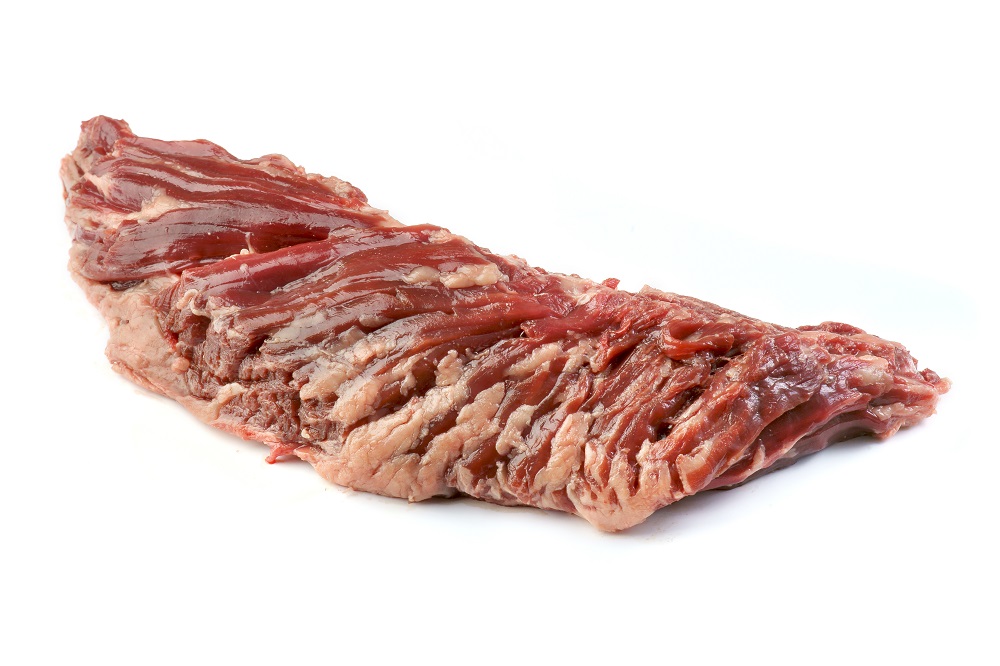
In instances where the skirt steak is unavailable or rather difficult to purchase in one’s area, simply finding a similar cut of cow’s meat with an identical texture and flavor should prove more than sufficient enough for replacing skirt steak in a recipe or as a stand-alone ingredient.
Otherwise, if the reasoning for substituting skirt steak is due to the fact that it is cow’s meat – of which may be in opposition to the consumer’s ethical or religious beliefs- certain non-meat or non-beef substitutes do exist that can recreate the flavor, appearance, and texture of skirt steak quite well.
Is Skirt Steak the same as Philadelphia Steak or Romanian Tenderloin?
The term Philadelphia steak, Romanian tenderloin, Romanian steak and a variety of other names all refer to the skirt steak or similar cuts of meat taken from the plate portion of the cow’s underbelly, with the former names usually being used outside of the United States to help identify this particular cut of meat.
As such, the Philadelphia steak or other alternative names for the skirt steak cannot be used as substitutes due to the fact that they are usually the exact same cut of meat, invalidating the decision to replace the skirt steak.
Fat Content and Flavor Substitutes to Skirt Steak
Prized for its excellent flavor due to the high quality marbling or fat deposition normally found in the plate of the cow, the skirt steak may be substituted with certain other cuts of beef that possess similar levels of fat content and marbling patterns.
However, as always, it is rather difficult to replicate the experience of eating skirt steak in its absolute entirety, and as such it is important for the chef to temper both their expectations and that of the consumer so as to avoid any subsequent disappointment.
Beef Hanger Steak / Butcher’s Steak
Cut from the exact same portion of the cow as the skirt steak, the hanger steak or butcher’s steak is prized for its excellent fat content and subsequent flavor, much like the skirt steak itself is.
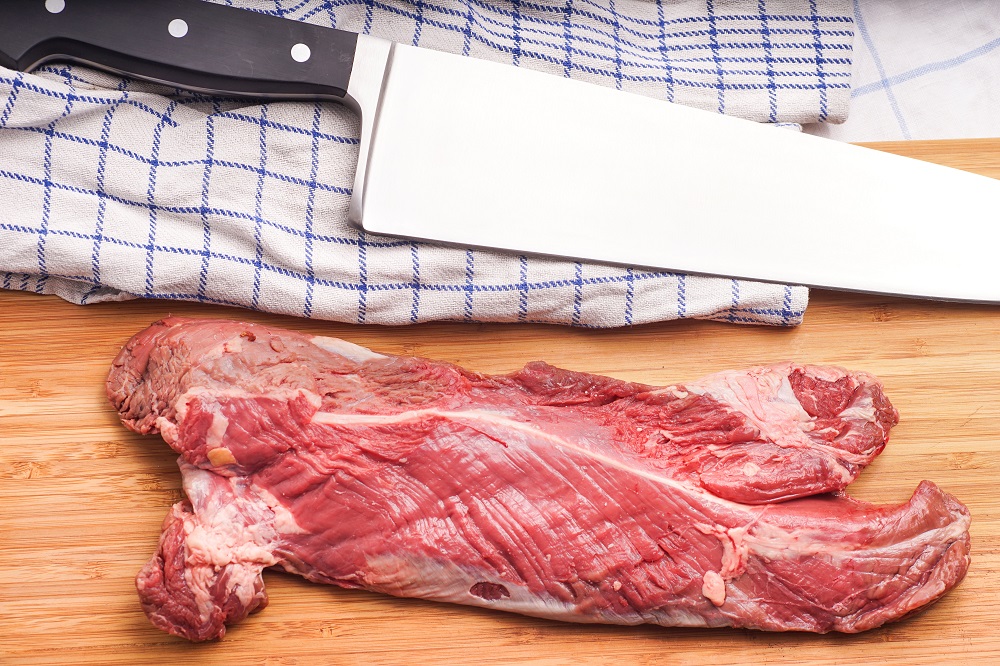
However, despite the fact that the hanger steak is considered at the least as flavorful as the skirt steak, it is rather tender and as such does not act as a suitable textural substitute for the former cut of beef, though this is not necessarily a drawback and in fact may be even more suitable than the skirt steak if used in certain recipes.
In Mexican cuisine, the hanger steak and skirt steak are occasionally used interchangeably in certain recipes due to the similarity in flavor profiles, making the hanger steak among one of the best choices possible for use as a skirt steak substitute, especially in the vein that the hanger steak may be treated in practically any way that the skirt steak is normally cooked by.
Flap Steak
Cut from the bottom sirloin portion of the cow located near its hind legs, the flap steak is considered one of the best possible candidates for substituting skirt steak in a recipe due to the similarities they share in terms of fat percentage, flavor, and even texture in certain situations.
These similarities, combined with the rather lower pricing of flap steak and the fact that it is not very popular in most of the world, make it a convenient and rather affordable alternative to the skirt steak, allowing it to be used in greater volumes and subsequently in more recipes.
In order to prepare flap steak for cooking as a skirt steak substitute, the chef may utilize much the same methods that they would in preparing a skirt steak, of which will usually take the form of marinading and tenderizing the meat prior to cooking it in practically any way meat may be cooked.
Even in terms of cutting the flap steak, the same technique that is normally applicable to the skirt steak may also be used with the flap steak, though care must be taken so as to ensure that the flap steak does not become even more tough to eat due to improper cutting methods.
Ribeye Steak
Extremely popular due to its intense flavor and versatility in terms of acting as an ingredient, the ribeye steak is no less a suitable replacement for the skirt steak than any other cut of beef in this article, especially in certain instances where its rather tender nature may act as a benefit despite the fact that the skirt steak is normally considered tough and chewy to eat.
As such, ribeye steak works best as a skirt steak substitute wherein it is used alongside a variety of other ingredients instead of as a stand-alone ingredient, such as in fajitas or other recipes that pair the otherwise excellent flavor of the ribeye steak with other notes in the flavor profile.
Boneless Strip Loin Steak
Cut, fittingly, from the short loin portion of the cow along the middle of its back and torso, the strip loin steak is a rather tender cut of steak known for being quite large in size and as such an excellent substitute for skirt steak if cut horizontally in thin enough slices.
This is best done after the strip loin steak has been deboned, creating the closest possible appearance and physical thickness to the skirt steak as possible, wherein the otherwise rather excellent flavor profile can replicate or even eclipse that of the skirt steak, either in a recipe or as a stand-alone steak meal.
Textural Substitutes to Skirt Steak
A hallmark characteristic found in the skirt steak is its somewhat tough texture wherein it is more prized for its flavor profile than its tenderness, due to the fact that it is used quite often during the lifespan of the animal and is therefore quite well developed at the time of its butchering.
Certain recipes may call for this particular texture to be used so as to provide a more chewy or otherwise more substantial texture to the textural profile of the dish, something a few particular types of meat other than the skirt steak are capable of replicating.
Flank Steak
Though not exactly as tough as the skirt steak, the flank steak is nonetheless considered one of the best possible substitutes for the skirt steak, both in terms of flavor and texture due to the fact that they share similar levels of fat content and are generally cooked using much the same methods and preparations.
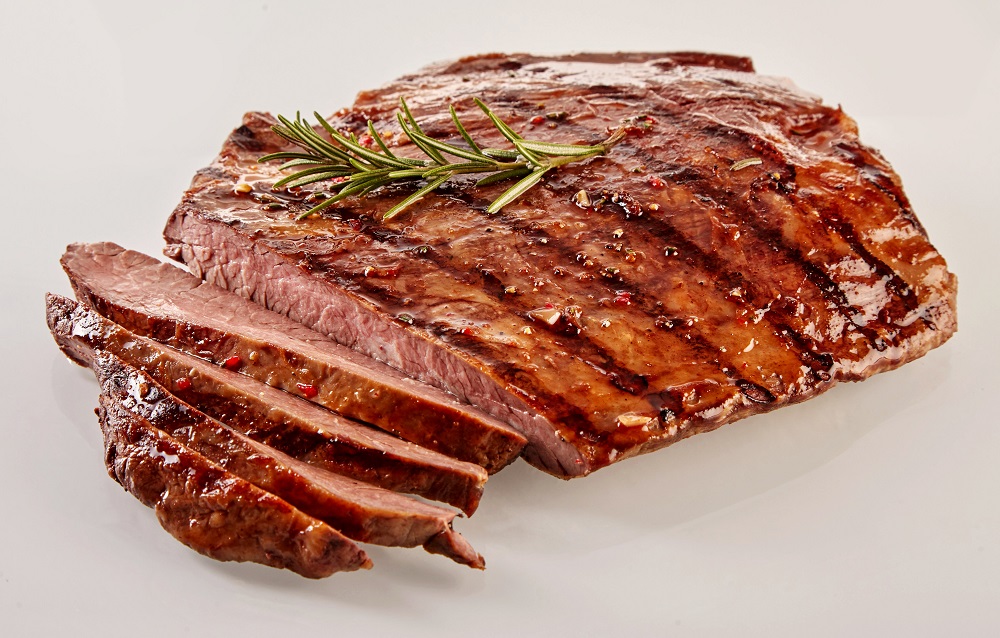
Flank steak is usually cut into thicker portions than what would normally be seen when purchasing a skirt steak, and as such the chef may find it preferable to request the butcher cut the flank steak into thinner slices so as to best replicate the appearance and texture of skirt steak itself.
Short Loin Type Steaks
Not a single cut of meat but in fact a portion of the cow that such steaks like the strip steak and T-bone are made from, steaks produced from the short loin located on the side and upper back of the cow are usually found to be only somewhat tender in comparison to adjacent parts of the animal, such as the tenderloin or the flank.
As such, the sort of steaks derived from the short loin – though requiring some extra work to butcher- are all capable of acting as skirt steak substitutes in terms of texture and occasionally in terms of flavor, especially if used in a recipe instead of a stand-alone steak.
Non-Beef Substitutes to Skirt Steak
In the case that the reasoning behind the substitution of skirt steak in a recipe or as a meal is due to ethical or religious beliefs against the consuming of meat or cows as food, there are a few types of meat or beef alternatives that are capable of replicating the texture and flavor of skirt steak.
However, these alternative products may require extensive flavoring or treatment in order to bring it into only an approximate level to the skirt steak – primarily due to the fact that they are not, in fact, skirt steak or in fact beef at all.
Seitan Skirt Steak Substitute
A form of wheat gluten used by individuals participating in the vegan or vegetarian diet, seitan may act as an excellent meat substitute (especially for skirt steak in particular) due to its rather tough texture and neutral flavor, allowing it to be flavored through the use of certain products so as to achieve as close an approximation to skirt steak’s flavor as possible.
When choosing to use seitan skirt steak substitute products, it is important to temper expectations and to utilize less intense methods of cooking due to the fact that seitan does not possess the same physical integrity as actual skirt steak, though its texture may be quite similar despite this.
Chicken Breast
Not vegan or vegetarian but nonetheless a non-beef substitute to skirt steak, chicken breast cooked in the proper manner and seasoned may recreate the same texture normally found in skirt steak, as well as certain savory flavor notes that may be called for in a recipe originally using skirt steak itself.
Chicken is best used as a skirt steak substitute in recipes that pair it alongside other ingredients that can overpower the distinct “chicken-y” flavor that would ordinarily accompany its use in a dish, a caveat that may be reduced in severity through such methods as marinading or dicing the chicken breast into smaller pieces.
Hard-Pressed Tofu
Being produced from coagulation products and soybeans, tofu can have a highly variable texture that is often graded into levels depending on how rubbery or tough it is to chew.
When using tofu as a skirt steak substitute, or as a steak substitute in general, it is best to use tofu graded at a firm or extra firm level, wherein the bean curds are somewhat visible and resistant to the touch, making it an excellent substitution for meat in terms of texture, especially when subjected to the rigors of cooking.
It is important to flavor firm and extra firm tofu with such ingredients like liquid smoke and monosodium glutamate so as to bring its flavor as close as possible to what would ordinarily be found in a skirt steak.
References
1. J. C. Brooks, J. B. Belew, D. B. Griffin, B. L. Gwartney, D. S. Hale, W. R. Henning, D. D. Johnson, J. B. Morgan, F. C. Parrish, Jr., J. O. Reagan, J. W. Savell, National Beef Tenderness Survey–1998, Journal of Animal Science, Volume 78, Issue 7, July 2000, Pages 1852–1860, https://doi.org/10.2527/2000.7871852x
2. T. G. O’Quinn, J. C. Brooks, R. J. Polkinghorne, A. J. Garmyn, B. J. Johnson, J. D. Starkey, R. J. Rathmann, M. F. Miller, Consumer assessment of beef strip loin steaks of varying fat levels, Journal of Animal Science, Volume 90, Issue 2, February 2012, Pages 626–634, https://doi.org/10.2527/jas.2011-4282
3. Aliza Green, John Kelsey. (2004) “Field Guide to Meat: How to Identify, Select, and Prepare Virtually Every Meat, Poultry, and Game Cut Field Guide “ Quirk Books Publishing. ISBN 1931686793, 9781931686792
4. Pat LaFrieda, Carolynn Carreño. (2014) “MEAT: Everything You Need to Know” Simon and Schuster. Retrieved through Google Books. ISBN 1476726019, 9781476726014

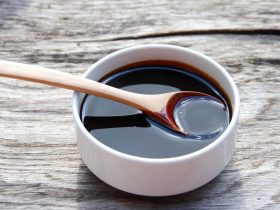
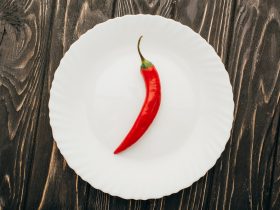
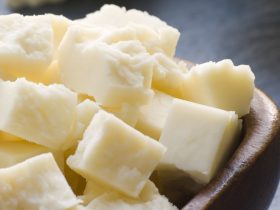
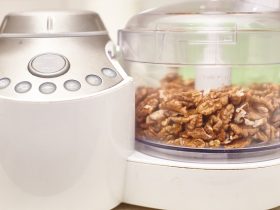
Hi, I'm Dom
Dom Eats was started to help other people fall in love with food. While cooking can feel intimidating, it doesn't have to be.